The African Buffalo, also known as the Cape Buffalo, is a formidable creature that roams the savannas, woodlands, and forests of Africa.
Known for their sheer strength and unpredictable nature, these magnificent beasts play a crucial role in their ecosystems.
Let’s explore twelve fascinating facts that highlight the unique characteristics and behaviors of the African Buffalo.
From their social structures to their survival strategies, these facts will delve into what makes these animals so extraordinary.
The Sturdy Build
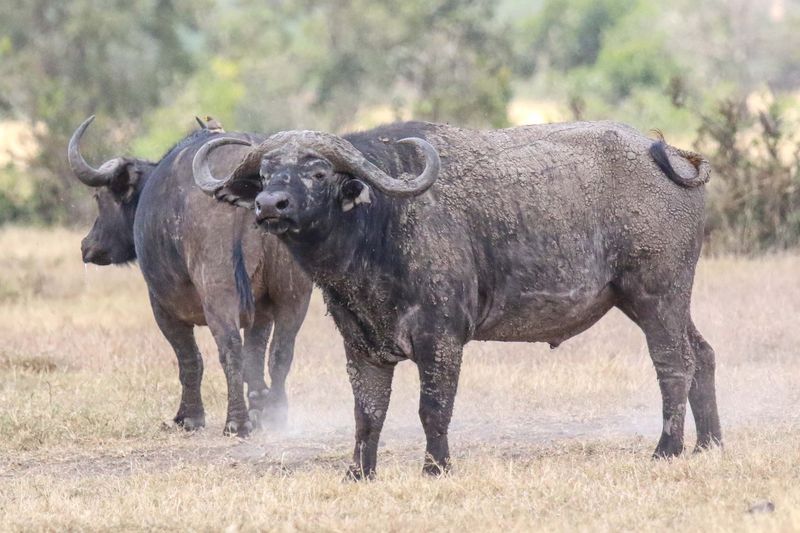
The African Buffalo is renowned for its robust physique, with males weighing up to 1,900 pounds. Their thick necks and large heads are adorned with massive horns that curve gracefully. These horns, which can span over a meter, serve as formidable weapons against predators.
Their powerful build allows them to fend off threats and navigate through dense vegetation with ease. Did you know? The horn bases are fused, forming a continuous bone shield known as a “boss.”
This unique feature not only adds to their majestic appearance but also enhances their defense mechanism.
Complex Social Structures

African Buffaloes live in large, organized herds, sometimes numbering over a hundred individuals. These herds are primarily composed of females and their offspring, while males often form bachelor groups. This social organization helps in protecting the young and in decision-making.
Leadership within the herd is often shared, with experienced females guiding the group to water and pasture. The communal nature of these animals is vital for their survival, as it provides security against predators like lions and hyenas. Such intricate social dynamics highlight their intelligence and adaptability in the wild.
The Role of Dominance
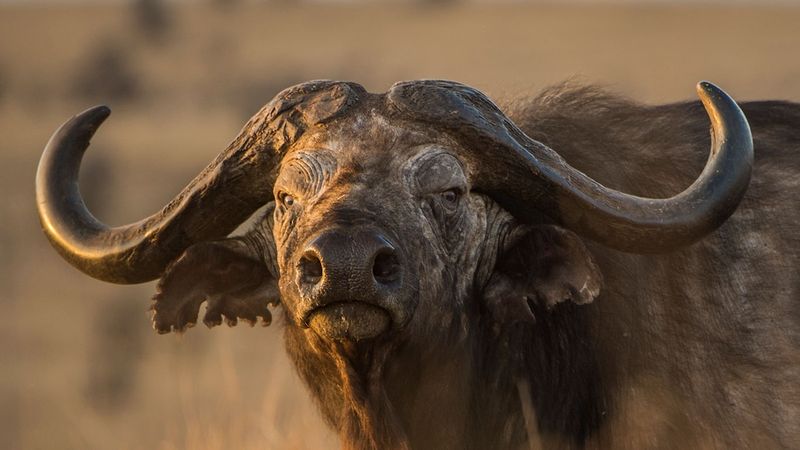
In the world of the African Buffalo, dominance plays a crucial role. Males often engage in fierce battles, locking horns to establish hierarchy within the group. These contests, though intense, seldom lead to serious injury due to their well-evolved combat techniques.
Dominance not only affects breeding rights but also access to resources like food and water. Such interactions are a testament to their strategic thinking and resilience. This behavior underscores the complex and sometimes brutal social structure of these powerful creatures.
Unpredictable Temperament
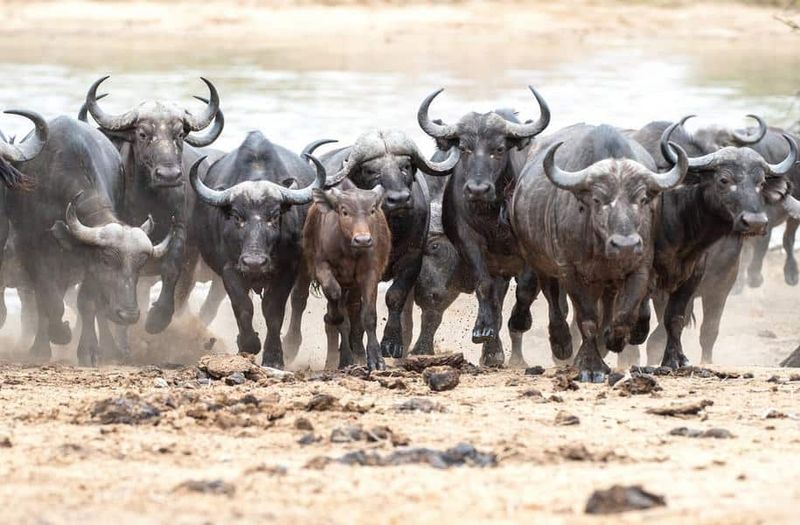
The African Buffalo is infamous for its unpredictable and sometimes aggressive temperament. Unlike other herbivores, they are known to charge when threatened, making them one of the most dangerous animals in Africa.
This reputation is well-earned, as they tend to retaliate fiercely against potential threats, including humans. Despite their seemingly calm demeanor, they require respect and caution. This aggressive behavior is a key survival tactic, ensuring that predators think twice before attacking. Their unpredictable nature is what makes encounters with them so thrilling yet perilous.
Adaptations to Habitat
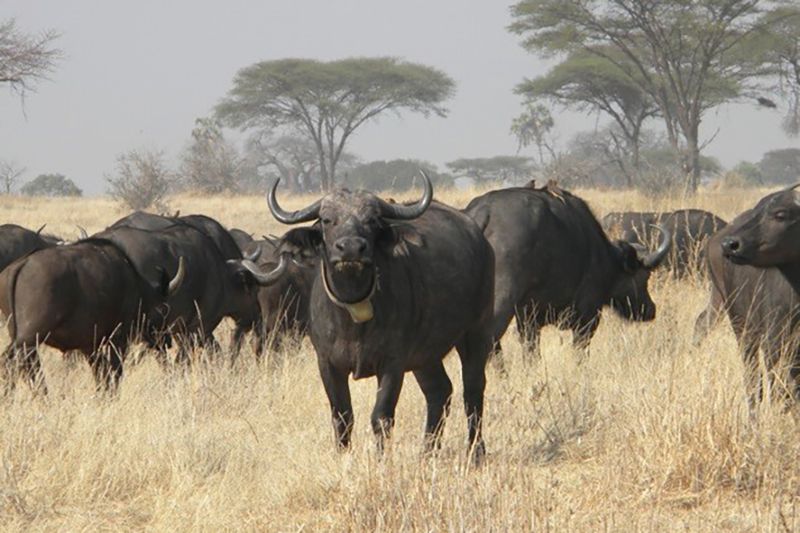
African Buffaloes are highly adaptable creatures, thriving in various habitats across the continent, from savannas to wetlands. Their ability to consume a wide range of vegetation makes them resilient to changes in their environment.
They are often found near water sources, which are vital for their survival, especially during dry seasons. This adaptability allows them to spread across diverse landscapes, playing a critical role in their ecosystems. Such versatility in habitat preference showcases their evolutionary success and enduring presence in the African wilderness.
Remarkable Memory

African Buffaloes possess an impressive memory, particularly when it comes to locating water sources and grazing areas. This memory aids in their survival, especially during droughts when resources are scarce.
Elders within the herd play a crucial role in guiding younger members, ensuring the continuity of knowledge across generations. This trait demonstrates their cognitive abilities and highlights the importance of experience in their social structures. Remarkable memory serves as a vital tool in their day-to-day survival, underscoring their intelligence and resourcefulness.
Powerful Defense Tactics

When threatened, African Buffaloes employ a unique defensive strategy. They form a protective circle with the calves in the center, a tactic that confounds predators. This formation, along with their sheer numbers, is often enough to deter even formidable hunters like lions.
Such defensive maneuvers are a testament to their social cohesion and strategic planning. This behavior not only protects the vulnerable members of the herd but also reinforces the communal bonds that are essential for their survival in the wild. Their defense tactics are a marvel of natural teamwork and coordination.
Survival Instincts
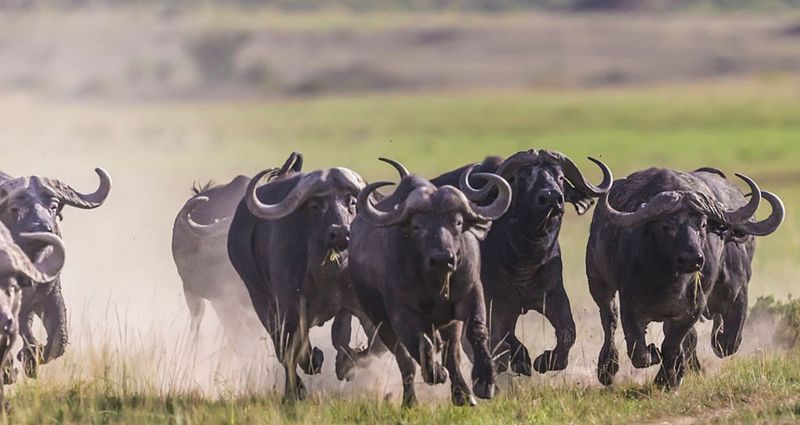
Survival in the African wilderness demands ingenuity and resilience, qualities that the African Buffalo embodies. Their instincts are honed to detect threats and adapt to challenges, ensuring the herd’s safety.
They are known to travel great distances in search of food and water, demonstrating remarkable endurance. This relentless pursuit of survival showcases their determination and tenacity. The ability to persevere in harsh environments highlights their status as one of Africa’s most resilient creatures, capable of thriving amidst adversity.
Symbol of Strength
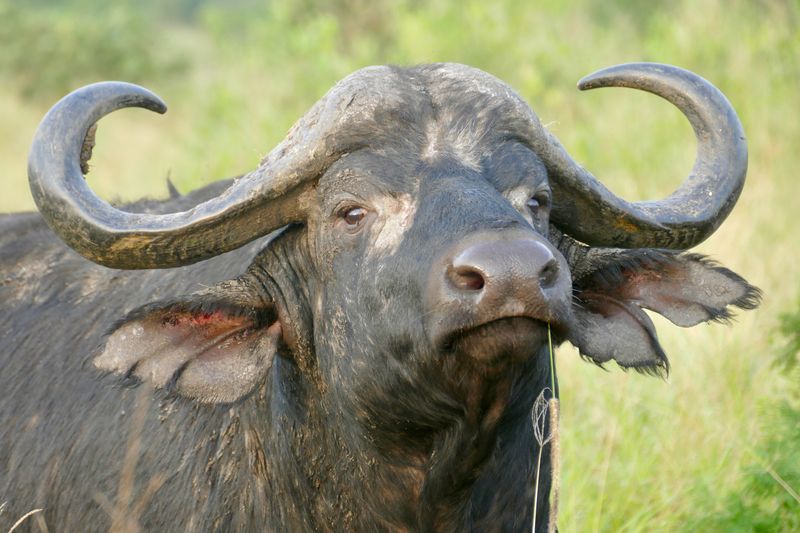
The African Buffalo is often seen as a symbol of strength and resilience. Their sheer size and powerful presence have inspired many cultures, where they are revered as emblems of power.
In various African traditions, the buffalo is celebrated in dance and art, symbolizing endurance and bravery. This cultural significance reflects their impact beyond the natural world, illustrating the deep connection between these animals and human societies. As a symbol of the wild, the African Buffalo embodies the untamed spirit of the African continent.
Role in the Ecosystem
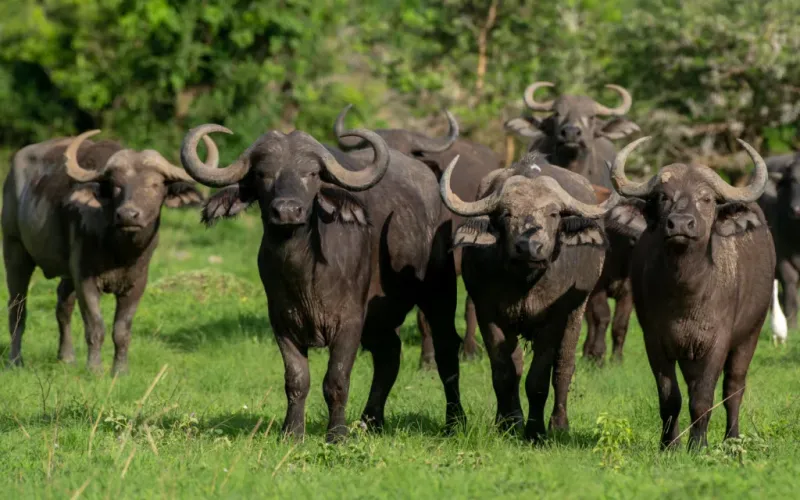
African Buffaloes play a vital role in their ecosystems, primarily as grazers. Their feeding habits help in maintaining the balance of vegetation, promoting biodiversity. By consuming grasses, they prevent overgrowth and provide opportunities for other species to thrive.
Additionally, their movements across the land facilitate seed dispersal, contributing to the health of the habitat. This ecological role is crucial for sustaining the intricate web of life in their environments. Their presence is a key factor in the dynamic balance of their ecosystems, making them indispensable to the natural world.
Threats and Conservation
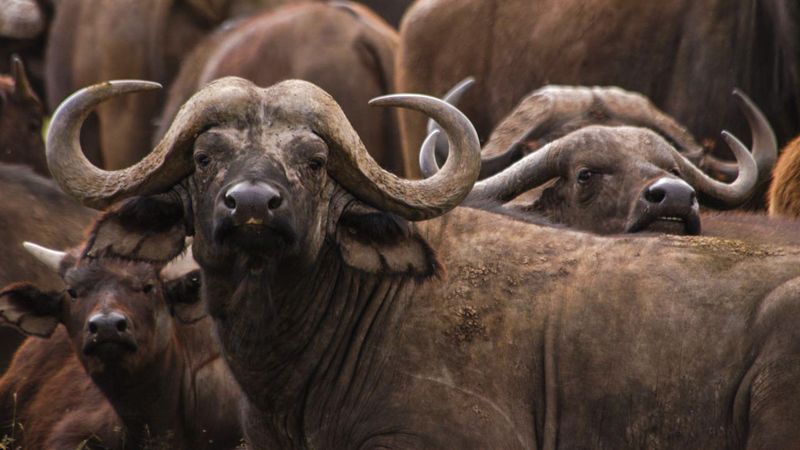
Despite their resilience, African Buffaloes face threats from habitat loss, poaching, and diseases. Conservation efforts are crucial to ensure their survival, focusing on habitat protection and anti-poaching measures.
Many reserves across Africa work tirelessly to preserve these magnificent creatures, recognizing their ecological importance. Education and awareness are also vital in combating the challenges they face. By understanding and addressing these threats, we can help secure a future for the African Buffalo, ensuring they continue to roam the wild landscapes of Africa for generations to come.
A Close Relative

The African Buffalo, or Cape Buffalo, is closely related to the Asian Water Buffalo, yet they inhabit entirely different environments. While the Water Buffalo prefers swamps and riverbanks in Asia, the Cape Buffalo thrives in the diverse terrains of Africa.
Despite their differences, they share a common ancestry, reflected in their physical similarities. This connection highlights the fascinating ways in which species adapt to their environments. The relationship between these two buffaloes offers insight into evolutionary processes, emphasizing nature’s ability to diversify life across continents.

